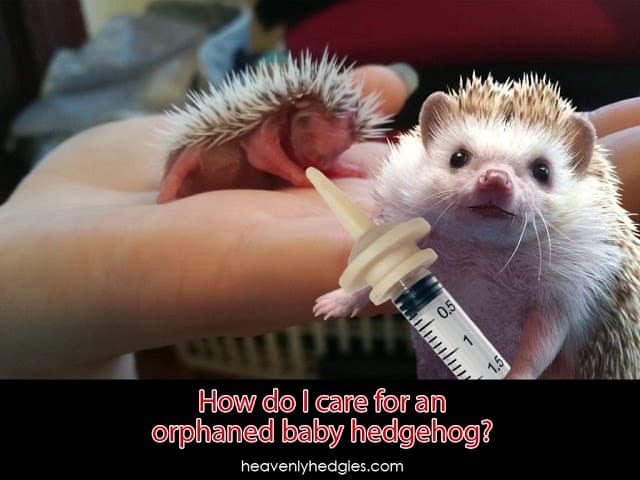
Caring for Baby Hedgehogs: A Comprehensive Guide
Baby hedgehogs, also known as hoglets, are adorable and delicate creatures that require specialized care to thrive. Whether you have found an orphaned hoglet or are planning to breed hedgehogs, it is crucial to understand their unique needs and provide them with the optimal environment to ensure their well-being.
1. Identifying an Orphaned Hoglet
Hoglets that are orphaned or abandoned by their mother typically exhibit certain signs:
- Cold and lethargic: Healthy hoglets are warm and active. If a hoglet feels cold to the touch and is not moving much, it may be orphaned.
- No mother in sight: Observe the hoglet for several hours. If the mother does not return to care for it, it is likely orphaned.
- Distressed vocalizations: Orphaned hoglets may emit high-pitched squeaks or cries, indicating distress.
- Dehydration: Check the hoglet’s skin by gently pinching it. If the skin does not snap back quickly, it may be dehydrated.
2. Providing Immediate Care
If you find an orphaned hoglet, it is essential to provide immediate care:
- Warmth: Place the hoglet in a warm, draft-free environment. Use a heating pad set to low or a warm water bottle wrapped in a towel.
- Hydration: If the hoglet is dehydrated, offer it warm Pedialyte or a specialized hedgehog milk formula using a syringe or dropper.
- Stimulation: Gently massage the hoglet’s genitals and anus to stimulate urination and defecation.
3. Establishing a Home for the Hoglet
Once the hoglet is stabilized, it is time to create a suitable home for it:
- Enclosure: Provide a small enclosure, such as a plastic storage bin or a small cage, with plenty of bedding. Use soft materials like fleece or shredded paper.
- Temperature: Maintain a temperature of 75-85°F (24-29°C) using a heating pad or heat lamp.
- Light: Provide a 12-hour light/dark cycle using a nightlight or a timer.
4. Feeding the Hoglet
Hoglets require specialized milk formulas specifically designed for hedgehogs. Follow the manufacturer’s instructions carefully for feeding frequency and amount.
- Bottle-feeding: Use a small syringe or dropper to feed the hoglet. Hold the hoglet upright and gently insert the syringe into its mouth.
- Cup-feeding: Once the hoglet is older, you can offer milk in a shallow dish.
5. Weaning the Hoglet
Around 4-6 weeks of age, hoglets can be weaned onto solid foods. Gradually introduce small amounts of moistened kitten food or specialized hedgehog food.
6. Socialization and Handling
Handle the hoglet gently and regularly to socialize it. Avoid sudden movements or loud noises. Allow the hoglet to explore its surroundings under supervision.
7. Health Care
Regular veterinary checkups are essential for the health of baby hedgehogs. Vaccinations, parasite prevention, and nail trims should be part of the routine care.
8. Common Health Issues
Baby hedgehogs are prone to certain health issues:
- Pneumonia: A respiratory infection that can be fatal if not treated promptly.
- Diarrhea: Can be caused by improper feeding or parasites.
- Skin infections: Hedgehogs can develop ringworm or other skin infections.
- Dental problems: Malocclusion or overgrown teeth can cause discomfort and health issues.
9. Releasing a Rehabilitated Hoglet
If the hoglet was orphaned but healthy, it may be possible to release it back into the wild once it is old enough. Consult with a wildlife rehabilitator for guidance on the appropriate time and location for release.
10. Breeding Hedgehogs
Breeding hedgehogs requires careful planning and preparation:
- Selecting breeding stock: Choose healthy, unrelated hedgehogs with desirable traits.
- Housing: Provide separate enclosures for males and females.
- Breeding season: Hedgehogs typically breed in the spring and fall.
- Gestation and birth: The gestation period is about 35 days. The female will give birth to a litter of 3-7 hoglets.
- Care for newborns: Follow the same care instructions outlined for orphaned hoglets.
Conclusion
Caring for baby hedgehogs is a rewarding but challenging endeavor. By providing them with the proper nutrition, environment, and medical care, you can help these adorable creatures thrive and reach their full potential. Remember to seek professional guidance from a veterinarian or wildlife rehabilitator if you have any concerns or questions.
